Cezanne’s Strange Spaces
This Cezanne still life has strange spaces – as do many of his still life paintings. As a student I didn’t understand them so well and didn’t really appreciate Cezanne. But as I developed a better understanding of the hurdles to creating space and began to understand the importance of geometry in art, I grew to love and admire Cezanne’s paintings. I think one has to learn how to look at a Cezanne. It is better to see his paintings in person – reproductions are fine once you have stood in front of the actual painting, but to really experience the painting nothing is like seeing it on the wall. When you give the paintings some time, the space and rhythm develop and areas of the painting that seem at first glance to be very flat, open up. The reproduction is from a Cezanne book I have, you can see some of the faint pencil lines I made when working on my study, I don’t do that anymore and don’t recommend it.
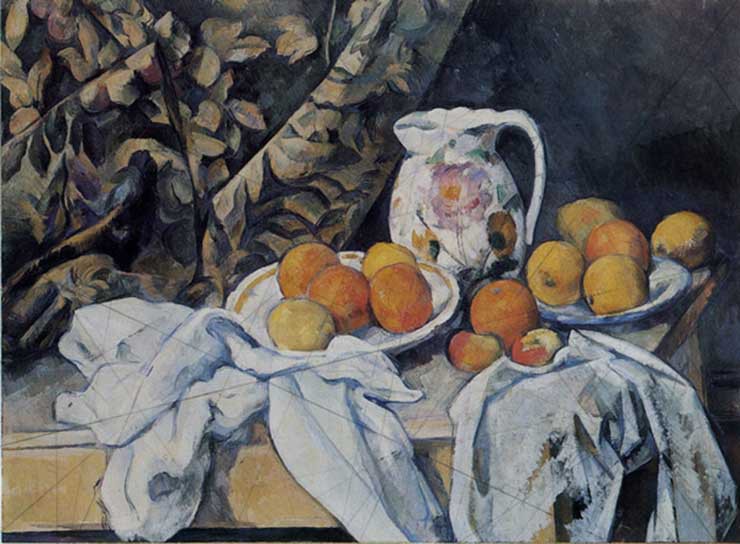
This is my copy from a while back, but I think the idea still holds. It’s a band that flips (reverses) from right to left front to back. Rather like the necker cube but extended in another way. I have found neater and easier ways to look for relationships using the computer to draw, an overlay of parallel lines is much easier to do and shows how I look for connections.
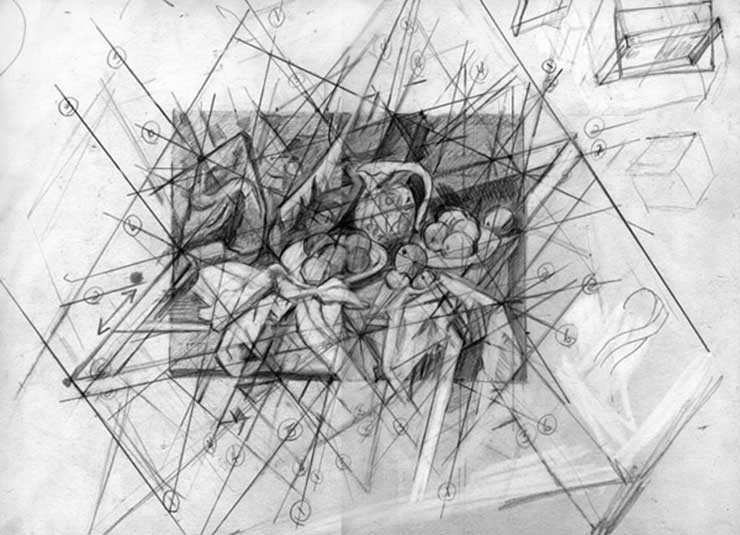
The Important Sets of Diagonal Lines
I think these are the most important sets of diagonal lines. One thing that I noticed that is interesting is that Cezanne often broke the front edge of the table. What I mean is that the small pieces of front table edge that you can see don’t make one line but several different “table front edges”. So, in my view that line is less important to the geometry of the picture, but the diagonal that represents the side of the table is very important – you can see this by the number of times it is repeated through the painting. If you look at it for a while you can see how neatly the painting fits the geometry. The right front corner (covered with drapery) is a particularly striking area. If you think about the necker cube and its reversals you can see how the space unfolds.
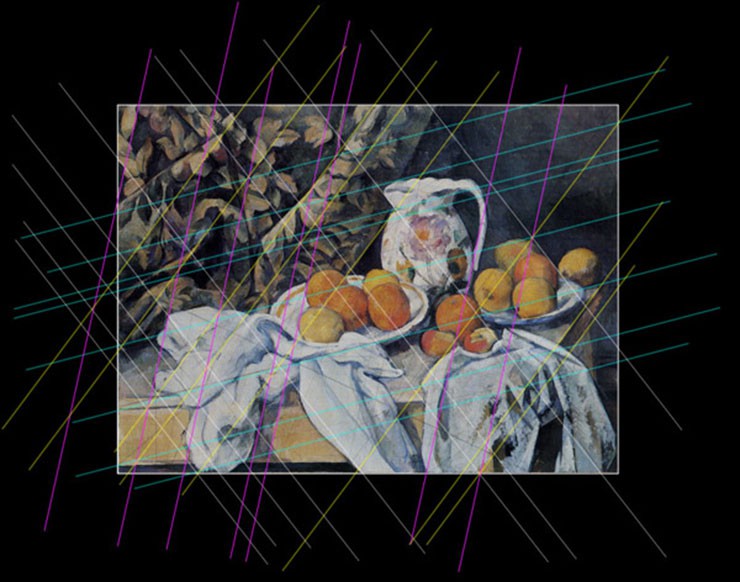
The Necker Cube Squished
This is really just another way of thinking about the necker cube, and I can’t tell you how this came to mind, I don’t remember, but I think it fits in an interesting way. It is certainly possible to find other forms – the beauty of parallel diagonals is their harmony with so many geometric forms that can be expressed. One switches from container to contained from inside to outside.
.
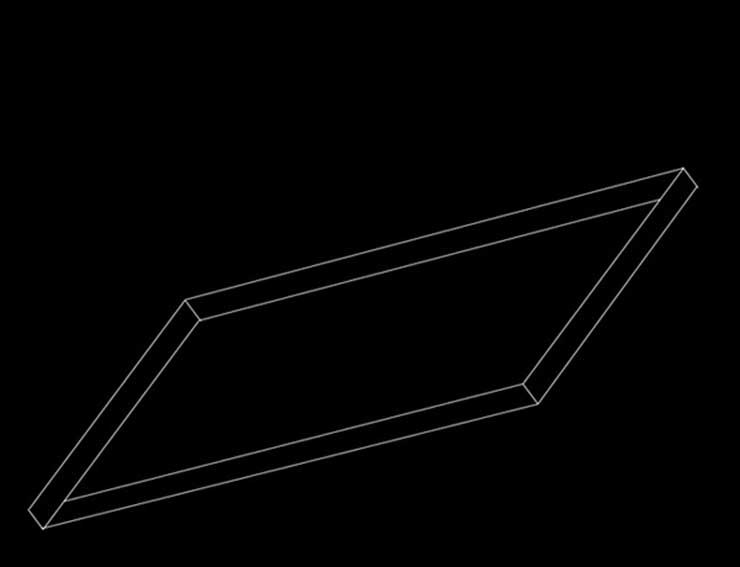
This is what I was thinking and the next illustrations reversing band is more transparent, so you can see the whole thing better.
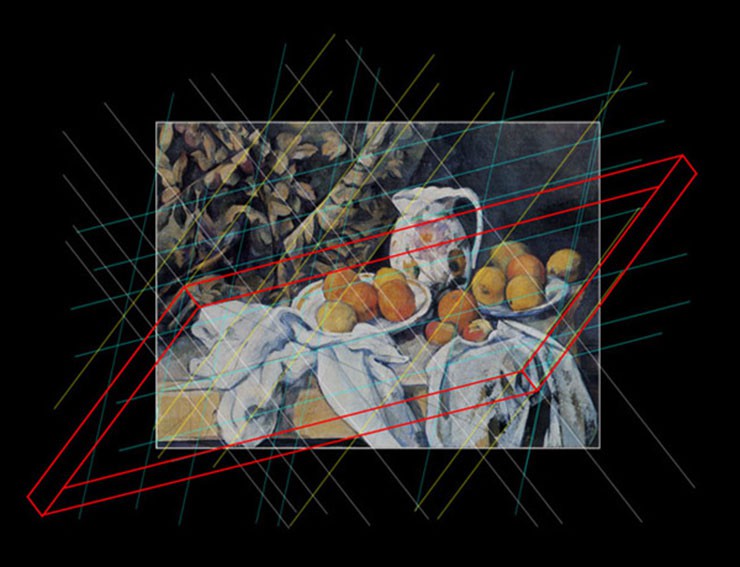
I have used this form in some paintings and variations of it – it’s both functional and dynamic and seems to have many possibilities. I think its very cool how this kind of geometry makes it possible to express many of the complexities we see in nature and yet make a painting that is a separate and self completing whole.
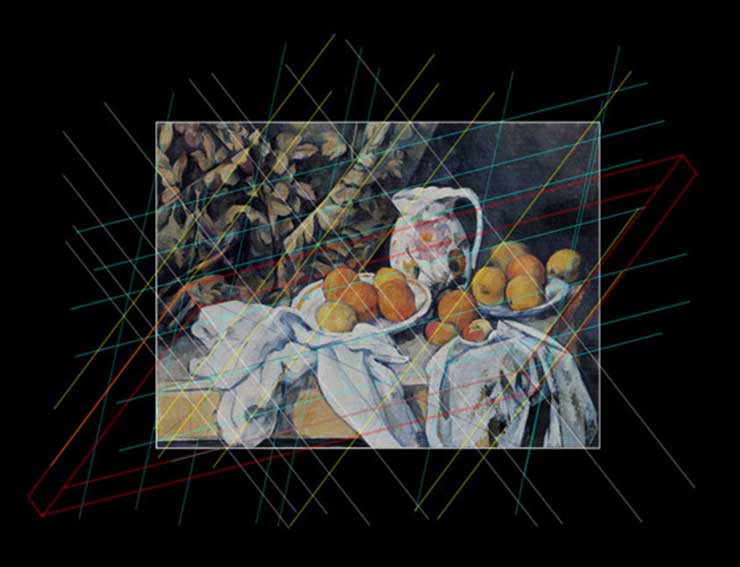
Leave a Reply